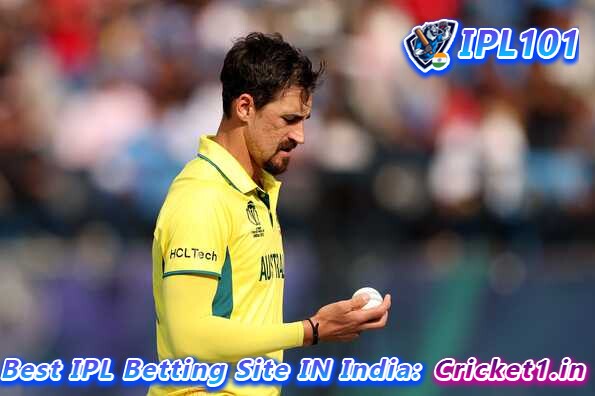
The debate over the use of two new balls in One-Day International (ODI) cricket has once again come to the fore, as Australian pace spearhead Mitchell Starc added his voice to concerns initially raised by cricket legend Sachin Tendulkar. Starc’s call to revert to the previous rule of using a single ball throughout a 50-over innings echoes Tendulkar’s sentiment that the current dual-ball system has “killed off reverse swing”—a critical weapon for fast bowlers during the final stages of an ODI match.
Mitchell Starc brought this issue back into the spotlight on Monday, November 13, amidst his participation in a challenging World Cup tournament in India. Reporting an underwhelming performance, with 10 wickets at an economy rate of 6.55, Starc suggested that the hardness of the two newer balls offers less opportunity for reverse swing and hence reduces the role of bowlers in the latter overs of the game.
Despite beginning his ODI career when the single-ball rule was in effect, Starc has since played 117 ODIs with the new rule, further reinforcing his perspective. He pointed out that though reverse swing is not entirely out of the picture with two new balls, the possibilities for it to play a significant role are diminished.
Starc is categorical in his belief that one ball should be used for a full ODI innings. While he acknowledged the role of dew in affecting the ball’s condition, he reinforced his view that bowlers need to be given a fair chance to balance the scales in what is predominantly a batter’s game.
While some may argue that Starc’s success with one of the most potent records in ODI cricket over the past twelve years undermines his critique, the fast bowler’s recent struggles highlight the difficulties bowlers face in batter-friendly conditions. Notably, this World Cup has showcased an average increase in the opening wicket partnerships against Australia, suggesting difficulties with early wicket-taking for bowlers operating with new balls.
Starc candidly described bowling with the new-ball first as perhaps the “hardest time to bowl” due to the two-fielder restrictions outside the circle. He emphasized the bowlers’ need to adapt and find new ways to cope with changing conditions and the evolution of the game.
Notably, fast bowlers have not been completely sidelined, as evidenced by their dominant presence among the top wicket-takers in the current World Cup. Adapting to the conditions, bowlers have made necessary adjustments, especially as the balls get scuffed and softer, making it possible to exercise more control in the latter half of the innings.
Starc himself has had to evolve his approach, especially in the face of the modern-day 360-degree batters who challenge bowlers with innovative shots. Confidence in his skills, particularly his trademark yorkers, remains unshaken, and he embraces the challenge, accepting that on some days the batters will have the upper hand.
The fast bowler’s resilience was on display during the last over against New Zealand in Dharamsala, where his skillful performance contributed to Australia’s progression to the semifinals. Nevertheless, Starc is acutely aware that, as a 33-year-old veteran, this could be his final World Cup, although he is not ready to retire from ODI cricket just yet.
In conclusion, as the sport continues to evolve, the debate over the use of two new balls in ODI cricket remains a contentious issue. With prominent figures like Tendulkar and Starc calling for a return to the single-ball practice, it remains to be seen whether the authorities will consider a revision to reintroduce an equilibrium between bat and ball.

